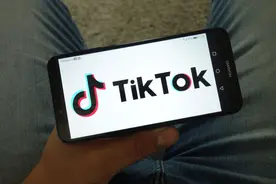#Headline Creation Challenge # # Suzhou Headline # # DTC Brand # # Foreign Trade Exchange # # Cross border E-commerce # # tiktok # With the increase of online customer acquisition costs, more and more inbound players have joined, and many DTC brands relying on traffic dividends have begun to deploy other channels to seek solutions.Some brands expand DTC user data pool by entering Amazon, creating two ecological resonance of Amazon+DTC.Some brands turn to offline channels, test flash stores, and build low-cost drainage windows.When 2023 comes, let's take stock of the current situation of DTC brand.1.European and American consumers still prefer independent stations.According to eMarketer's prediction, despite the rough road ahead, it is estimated that DTC's online sales in the United States will achieve double-digit growth by 2024, reaching nearly 213 billion dollars, accounting for 16.6% of the total e-commerce sales.This growth trend is mainly caused by the increase in the number of digital native brands.It is estimated that DTC consumers in the United States will grow to 111 million next year, accounting for nearly 40% of the total population of the United States.This is not just an opportunity for DTC brands in the United States.Data shows that nearly two thirds (64%) of consumers in the world buy goods directly from the official brand website, a 15% increase over three years ago.The first reason why consumers choose independent stations? Very simple: Compared with other channels, independent stations can provide a faster and more convenient shopping experience.In addition, because European and American consumers are accustomed to shopping through search engines and keywords, there is a large space for independent development in Europe and the United States.This is related to the consensus of overseas search engines and social media platforms on opening and collaboration.They allow the placement of website links, creating good conditions for independent stations to lead.DTC players: Several sports apparel companies such as Nike, lululemon and Adidas are the biggest winners of DTC sales growth this year.At the same time, StitchFix, SmileDirectClub and other companies have stagnated in growth this year.Not only have losses increased significantly, but they are also facing the problem of declining profits caused by the loss of users.Peloton has made four layoffs since this year, with a total of more than 1000 layoffs.In the past year, Peloton has been hit hard, facing various problems such as low sales, serious losses, and changes in senior management.Since 2022, Peloton's market value has dropped by about 80%, and a large number of offline stores have been closed.Looking at the whole market, Peloton is not the only company whose business has dried up.Nautilus's sales in the latest fiscal quarter dropped by 70%; IFit Health&Fitness, the parent company of Nordic Track, an American fitness equipment manufacturer, withdrew its IPO plan at the beginning of this year after delaying its initial public offering in October last year; In Nordstrom, the Internet fitness startup supported by Amazon, Tonal also announced a one-third layoff; SoulCycle, the darling of the fitness industry, also closed 25% of its stores.Big brands are stepping down DTC digital original products
-
Home
-
Product
SolutionsmanagementUnified management of multiple mobile phones and accounts
Marketing automationUse scripts instead of manual automation to run APP applications
Self-developed scriptJavascript can be used to develop all mobile terminal automation operations
SolutionsData monitoringMulti-dimensional monitoring account and peer online red data
analysis reportMulti-dimensional analysis report of data
-
About






Comment Cancel reply